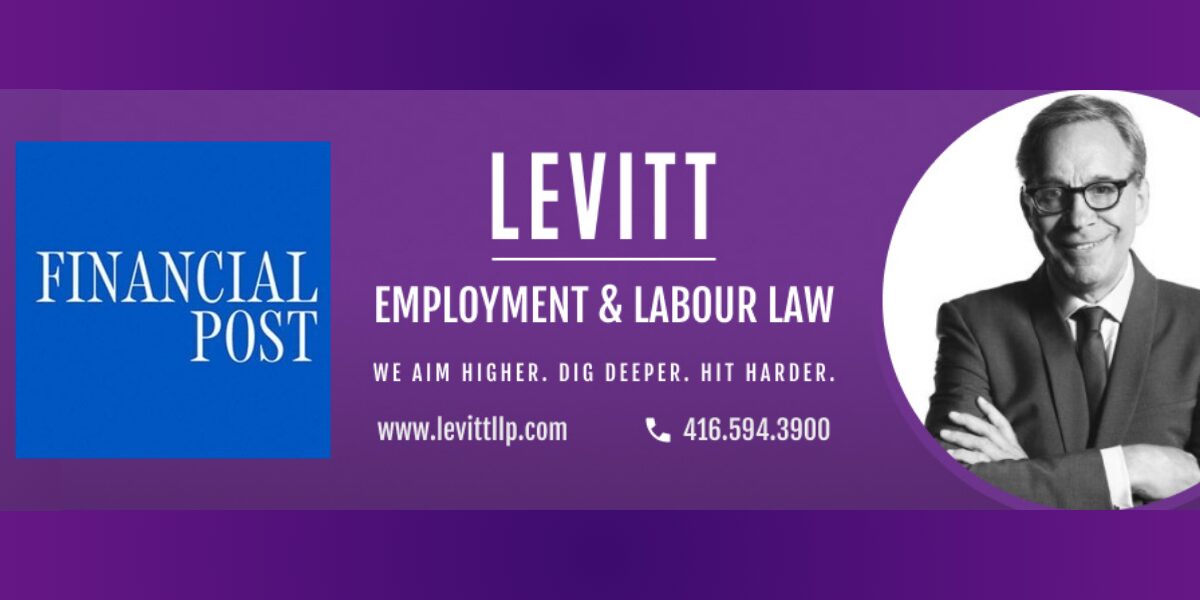By Howard Levitt
There is no ‘free speech’ in the workplace, even at the highest level of CEO
Cifu makes no secret of his Zionism, with five Israeli flags on his X account page, along with the disclaimer (likely to avoid the very thing that happened to him) that “all tweets are mine,” thinking that might insulate the team from whatever comments he might make and himself from any repercussions.
His obvious support for Israel was sufficient to enrage a Maple Leafs fan and apparent anti-Zionist into turning X banter about the ongoing hockey series into a fight about the Middle East.
Clothed in anonymity by the X handle “Dr. Grizzo,” this fan compared the Panthers’ hits on the Leafs to the Middle East conflict, claiming: “Hey what’s worse, using head shots to win a series or using starvation to win a war?”
Cifu responded with profanity and insults, calling him a “whiny dope anti semite” and a “51st state anti-semite loser.”
That was enough for the league, perhaps concerned about vacating fans and Canadians already upset at the 51st-state Trumpian imbroglio, to suspend Cifu indefinitely, notwithstanding his apology two days later.
The analogy would be if Cifu was a corporate chief executive indulging in personal histrionics which could embarrass his or her company, even through a purportedly personal social media account.
The point is that there is no “free speech” in the workplace, even at the highest level of CEO. In fact, there is much less room for error at the top because the CEO is the role model and highest representative of a company, whose conduct and comportment directly impacts on their employer’s reputation.
We do not know who “Dr. Grizzo” is, but, even if he turns out to be a rabid anti-semite making demonstrably false statements, it doesn’t change the fact that a CEO, more than any other employee, cannot respond in public in such a way that damages the company’s brand.
It would be otherwise if the board of directors had agreed to the conduct in advance, in which case the CEO would be immunized against repercussions from the employer. But that did not occur here.
It would not matter if Cifo (or a corporate CEO) could prove that their comments were justified or that they were responding to a scurrilous, ad hominem attack. Brand-damaging behaviour remains grounds for termination of a CEO, senior executive or, to a lesser extent, any employee in the company whose conduct brings the organization into disrepute.
This is particularly true for employees in managerial or public- and client-facing roles. It is this reality that led to a raft of firings after the hockey riot on Robson Street in Vancouver a few years back, when passersby photographed the rioters and sent the evidence to their employers. It is also why the person who shouted vulgar slurs at a female CityNews reporter a couple of years ago was found properly disciplined by a labour arbitrator when their employer learned of the encounter.
The fact that Cifo made clear that the comments were his own, not those of the organization, would make no difference. Not only is a board able to fire a CEO for conduct that damages the brand; if the conduct is damaging and/or egregious enough, it is cause for termination without severance.
Of course, Cifo was not terminated from his position, just suspended by the league — albeit indefinitely.
Suspensions are increasingly common, particularly in the context of workplace investigations. What recourse do suspended employees have?
Generally, a suspension — which is a fundamental change to the employment relationship in which one works in return for remuneration — is a constructive dismissal.
A short, paid suspension, subject to any contract of employment permitting it, might not be a constructive dismissal if the grounds for it are sufficient and it is indeed short. But an unpaid suspension is always a constructive dismissal, permitting the employee to resign and sue their employer.
It is the same for unpaid layoffs, which are also constructive dismissals, for the same reason.
Clearly the workplace investigation industry has gone too far, castigating and isolating employees by sending them home, while suspicions as to what they must have done to deserve such calumny invariably run rampant.
And the workplace investigation industry, as generally practiced today, is not a forum for truth finding, but rather for blame proving, as the employee can speak to no one and gather no evidence, while the employer’s investigator can examine them with impunity to build and solidify their case before the employee can even engage.
The recourse, I suspect, as more employees come to understand what occurs in such investigations, is to refuse to participate, and instead resign and sue for constructive dismissal, after receiving the appropriate independent advice.

